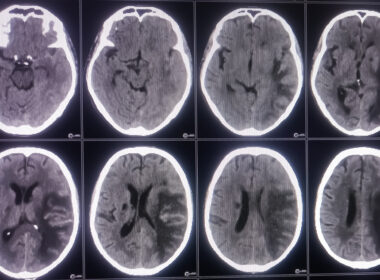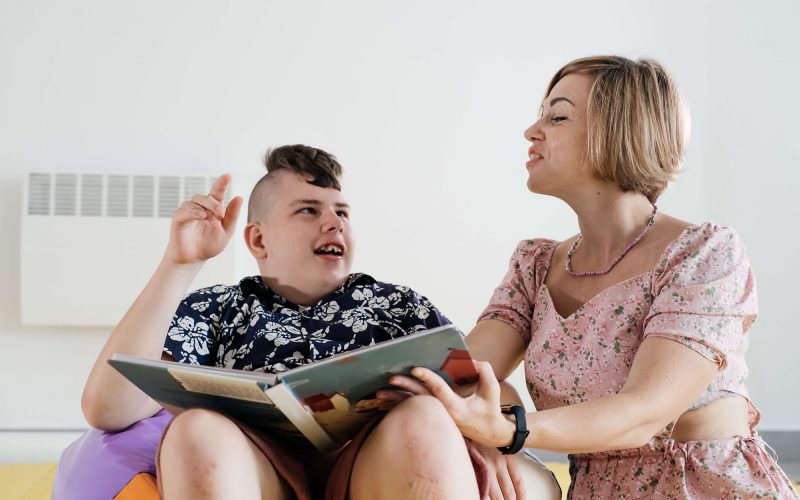There are five main types of cerebral palsy, one of which is dyskinetic cerebral palsy (also called athetoid cerebral palsy). Dyskinetic cerebral palsy is caused by injuries to the basal ganglia—the base of the brain that helps control movement. Brain injuries suffered during labor and delivery are the primary cause of dyskinetic cerebral palsy.
People with dyskinetic cerebral palsy experience uncontrollable movements which can be painful and make it difficult to perform certain tasks. Fortunately, medical treatment and physical therapy may alleviate some of these symptoms and enable patients to live fulfilling and productive lives.
Common Causes of Dyskinetic Cerebral Palsy
Though dyskinetic cerebral palsy is the second most common form of cerebral palsy, it affects fewer than 20% of those with the condition.
Dyskinetic cerebral palsy is typically associated with head trauma that affects the basal ganglia. The basal ganglia is a part of the brain that controls posture, voluntary motion, and automatic motion. The symptoms an individual with dyskinetic cerebral palsy exhibits correspond directly with which areas of the basal ganglia are damaged.
The basal ganglia may be injured if one of the following occurs:
- Insufficient oxygen during pregnancy or childbirth
- Untreated severe jaundice
- Untreated maternal infections
- Fetal stroke
- Head injuries caused by birth instruments (forceps or vacuums) or after birth
Treatment Options for Dyskinetic Cerebral Palsy
Research on dyskinetic cerebral palsy continues to evolve across the United States and abroad. Although there is currently no cure for dyskinetic cerebral palsy, research continues to advance. Those who are diagnosed with dyskinetic cerebral palsy have access to more treatment options to help reduce their symptoms and enhance mobility than ever before.
Every patient is unique. If a physician diagnoses a child with cerebral palsy, they will treat the child according to the symptoms presented.
Dyskinetic cerebral palsy is typically treated with the following:
- Limb braces to help stabilize motion and promote good posture
- Devices such as forearm crutches and walkers that improve mobility
- Medication management to reduce physical pain and damage to muscle tissue (muscle relaxants and anticonvulsants are commonly prescribed to people with cerebral palsy)
- Surgery to improve flexibility, gait, and posture: This is typically only recommended in severe cases and once other treatment options have been explored
There are more advanced treatment options available that are gaining popularity. Deep brain stimulation (DBS), for example, helps reduce seizures and other involuntary movements by blocking the signals from the brain that cause uncontrollable movement to occur.
Dyskinetic Cerebral Palsy Therapy
All kinds of therapy can also be incredibly beneficial to those with dyskinetic cerebral palsy. In addition to helping a child live more independently, therapy can also help alleviate dyskinetic cerebral palsy symptoms, improve the outcomes of other treatments, and reduce the need for medication.
Common types of therapy used to treat dyskinetic cerebral palsy include:
- Occupational therapy
- Physical therapy
- Speech therapy
No two patients are identical, and every person will respond to treatment methods differently. Some patients, particularly those with concurring epilepsy, have also found success with more alternative methods of treatment as well, such as medical cannabis, ketogenic diets, equine therapy, and more.
Dyskinetic Cerebral Palsy Support Groups
Treating the body can only go so far in alleviating the symptoms caused by dyskinetic cerebral palsy. One-on-one therapy sessions and group therapy sessions can help patients and their caregivers cope with the psychological effects of dyskinetic cerebral palsy.
In addition to traditional therapy, families may also benefit from support groups that allow them to hear from others who may be experiencing similar challenges. These groups can also be an important way to share information and tips regarding treatments, available assistance, and overall care to help a loved one live the most fulfilled life possible.
Families may find the following in-person and online cerebral palsy support groups helpful:
- United Cerebral Palsy: UCP provides information on emerging cerebral palsy research, assistance for people with cerebral palsy, and more. UCP is a partner of the Inspire Support Group, an online support group that discusses a range of topics to help parents, caregivers, and educators better support those in their life with cerebral palsy.
- Cerebral Palsy Forum: This online forum covers topics ranging from new treatment methods to care received at specific hospitals to medical malpractice and more.
Medical Malpractice and Dyskinetic Cerebral Palsy
Pregnancy, delivery, and shortly after birth are all critical times in an infant’s development. If a medical professional fails to spot health risks, does not perform certain tests, fails to treat the patient in a timely manner, or makes an error while treating a patient, the infant may suffer a birth injury and develop cerebral palsy.
Common medical errors that may result in dyskinetic cerebral palsy include the following:
- Failure to order a c-section if it appears that the baby’s weight may make it difficult to have a safe natural labor
- Failing to order an emergency c-section when the mother and/or baby are in distress
- Using too much force when assisting a baby through the birth canal
- Failing to treat jaundice or maternal infections
Contact Justpoint For a Free Legal Evaluation
If you are unsure of whether or not medical negligence may have played a role in your child’s dyskinetic cerebral palsy diagnosis, you suspect that an error happened, or if you need advice on the statute of limitations for any medical injury, contact our team for guidance on the next steps. We can put you in touch with a cerebral palsy lawyer who can examine your medical records to determine whether medical malpractice may have contributed to an otherwise avoidable diagnosis. An experienced medical malpractice lawyer can help you seek financial compensation for the injuries that caused you or your child to develop dyskinetic cerebral palsy.
A medical malpractice attorney in our network will know the steps to take to hold physicians, hospitals, and other parties liable for their negligent actions. If you are seeking the advice of an experienced medical malpractice attorney, contact Justpoint today to learn more about the legal services available to you. Our team is standing by to provide you with the information and guidance you need to make the best decision for you and your family.












